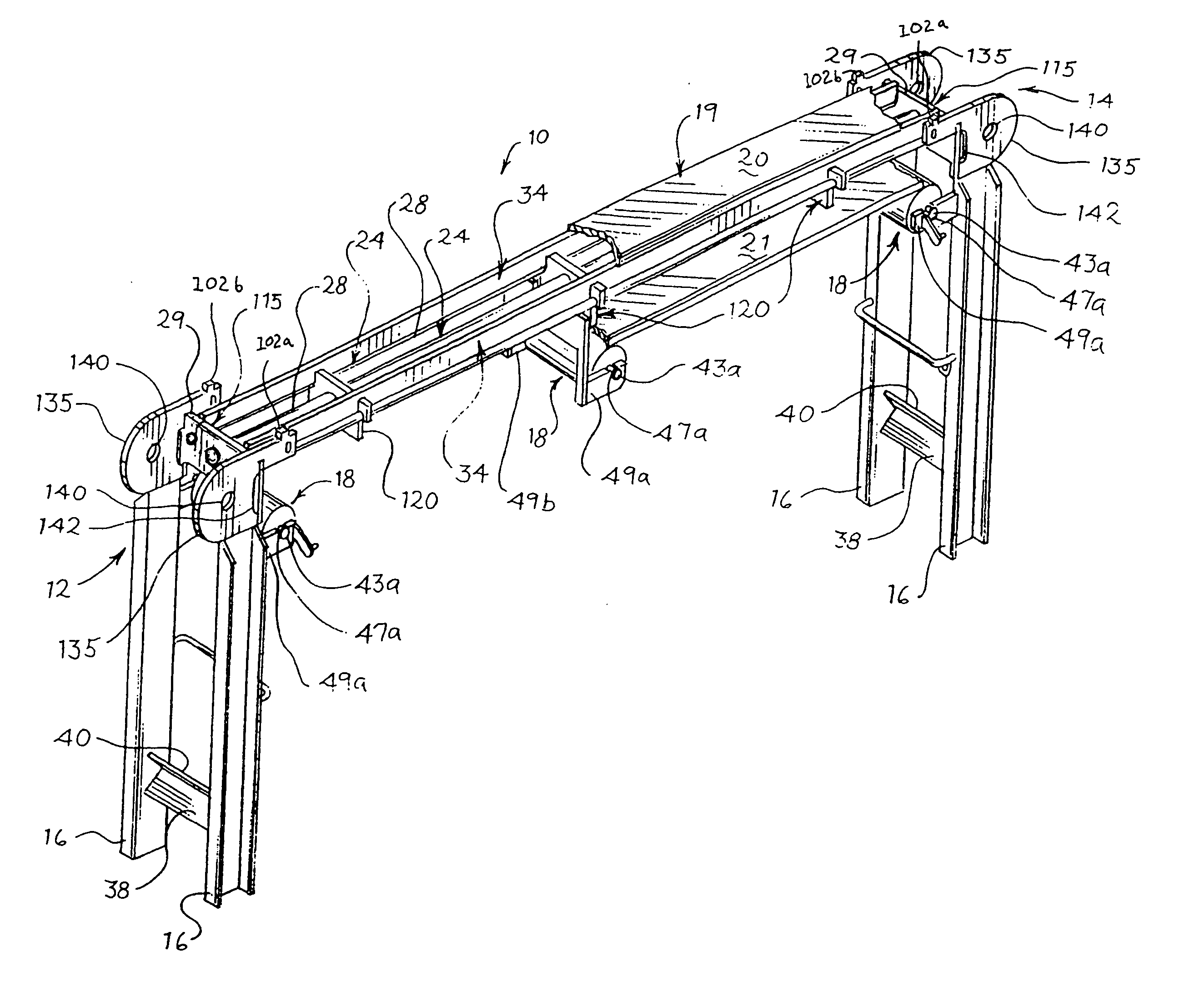Sanitary conveyor
a conveyor and sanitary technology, applied in the field of conveyors, can solve the problems of poor food production efficiency, difficult access to many of the internal components of a typical conveyor, and limited access provided by such openings
- Summary
- Abstract
- Description
- Claims
- Application Information
AI Technical Summary
Benefits of technology
Problems solved by technology
Method used
Image
Examples
Embodiment Construction
[0056] This invention relates generally to conveyors, particularly to a sanitary conveyor adapted for use in production applications requiring usually frequent, periodic cleaning procedures in strict compliance with sanitary standards. Referring initially to FIGS. 1, 2, 8A, 8B and 8C, conveyor 10 in one embodiment comprises a frame 12 comprising a conveyor bed 14 supported by a plurality of legs 16, and at least one rotatable roller 18 supported by the frame. At least one endless belt 19 is in contact with the at least one roller 18 of the conveyor 10, the at least one belt defining both an upper portion (conveying run) 20 and lower portion (return run) 21, with the upper portion (conveying run) 20 supported by the conveyor bed 14. At least one longitudinal shield 22 (not shown in FIG. 8C) is movably attached to the frame 12 and is movable between at least opened and closed positions, the at least one longitudinal shield located laterally of at least the conveyor bed 14 when the shi...
PUM
 Login to View More
Login to View More Abstract
Description
Claims
Application Information
 Login to View More
Login to View More - R&D
- Intellectual Property
- Life Sciences
- Materials
- Tech Scout
- Unparalleled Data Quality
- Higher Quality Content
- 60% Fewer Hallucinations
Browse by: Latest US Patents, China's latest patents, Technical Efficacy Thesaurus, Application Domain, Technology Topic, Popular Technical Reports.
© 2025 PatSnap. All rights reserved.Legal|Privacy policy|Modern Slavery Act Transparency Statement|Sitemap|About US| Contact US: help@patsnap.com



